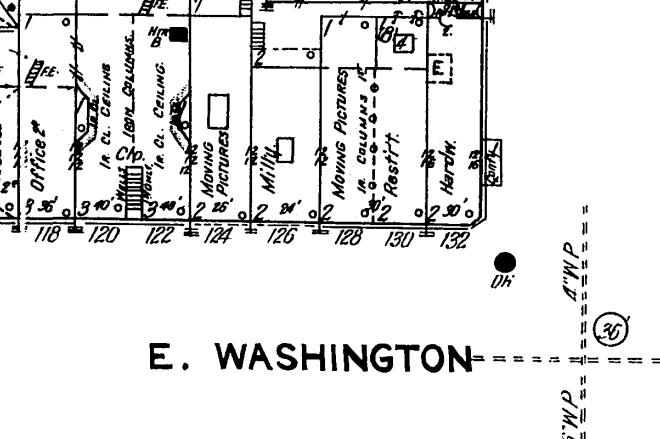Posted by Candice on Monday, Jul 16, 2018

Some years ago I was vacationing with my friend Carrie in Krakow, Poland, and we found ourselves having dinner in a restaurant called Wierzynek. It has been around since 1364. I honestly don't remember the food being anything spectacular, but that has more to do with being a vegetarian choosing from a traditional Polish menu. What I do remember is being amazed by the idea of sitting in a place where people from all walks of life had come to eat for hundreds of years. Touching the same walls, going through the same doors, seeing the same city square and market hall that they saw--it's some weird sort of time-travel. I'm still enthralled by moments like that, and get the same feeling when I'm at a place like Clinton St. Social Club, where you climb the steep, narrow stairs that people have used for over a hundred years, see the worn, geometric tile floors, the old brick walls and huge wooden beams. We still have a fair amount of old structures in downtown Iowa City, and I always enjoy being in them, wondering what they used to be, how they were used, what happened in them (did you know the Yacht Club was a mortuary? Same for just about every building in the pedmall block of E. College St, north side, at one time or another). I was having pizza at Flight the other night, looking out of their windows at the view of the old Jefferson Hotel and the tops of the other buildings on the street, wondering what had gone on in the space I was in.
Turns out, I work in one of the best places to find out that kind of information. If you're ever interested in finding out "what used to be here?" you'll want to check out the Sanborn Maps database. These are maps that were used by agents and companies to underwrite insurance policies for cities, starting in the 1880s. The maps show an abundance of information, including what materials buildings were made of, how many stories they were, where doors and stairs were located, street numbers, and most exciting, what the buildings were used for. The building at 124 E. Washington St. has had a number of uses since it was built in 1869, at which time it was the Security Insurance Co. and Bischoff's Harness Shop. In 1883, the building housed the United States Express Co. on the first floor, and a telegraph office on the second floor. The telegraph stays put through 1892, but in 1888 the first floor is a billiards parlor, and in 1892 it's a plumbing shop. 1899 brings billiards back (and the next door neighbor is the Anheuser Busch Beer Depot, with a bottling works in the back!) for at least ten years, then in 1912 it's Brown's Moving Pictures theatre. In 1920 there is a stationery shop with a bookstore in the back, same in 1926, and then in 1933 there is a restaurant there. After that, the maps simply show the building as being a 'shop' as opposed to any other kind of structure. To find out more detail, one could go to our wonderful collection of city directories, but I'll leave that for another post!
If you're interested in a historic building downtown, stop in the Library to look at our local history resources! In the meantime, go see some of them close-up, and do your own bit of time-travel.


This was a really engaging, smart read! The story sucks you in right away, with the main character, Bodie, returning to her posh prep boarding school out East to teach some classes during an interim session, and dropping the news that while she was a student there her former roommate was murdered and it has never set easy with her. There are a few stories here: the events of the 90s when Bodie comes to the school, and a couple years later when the murder happens; the current day where students producing a podcast decide to reinvestigate the murder; the person who was convicted of the murder; and Bodie's own personal life in current day, where she and her husband live somewhat separate lives, and they both get caught up in the Me Too movement. Makkai deftly weaves them together, and is very nuanced in her approach to dealing with many aspects of the issues. All the while, Bodie's narrating the events of the book to someone she at first only refers to as You, a clever tactic that takes us along as she lays out her evidence that points towards who she thinks committed the murder. If you like your mysteries up-to-date and with a small side of that prep school/dark academia thrown in, this is for you! -Candice